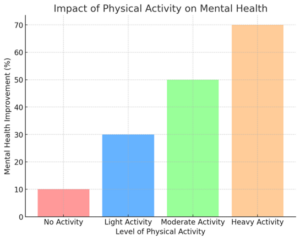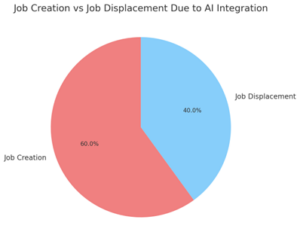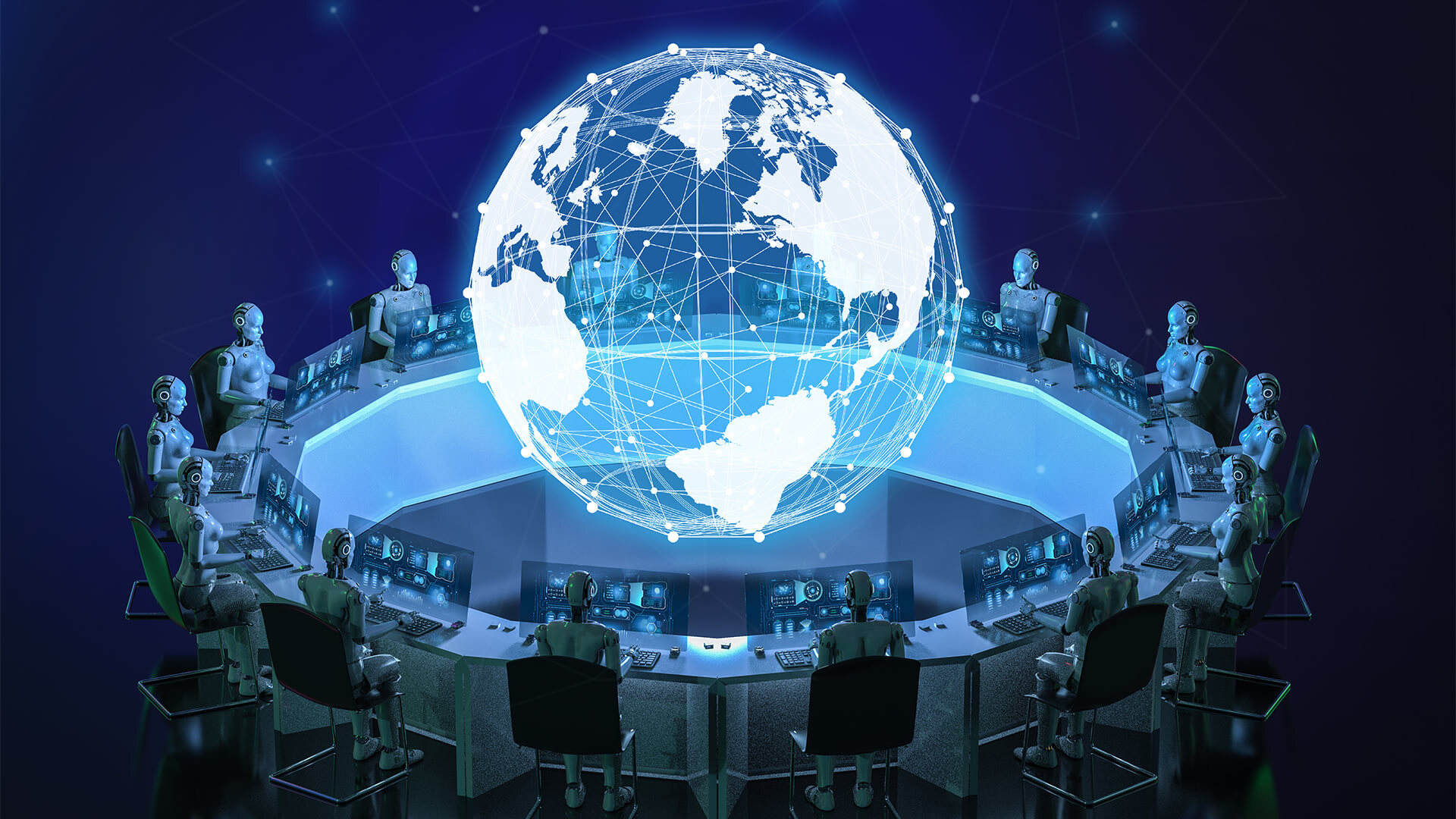Research Objectives:
This study aims to explore how higher education institutions (HEIs) can be reimagined in 2024 to empower students and contribute to a sustainable future.
Keywords:
Generative Artificial Intelligence, Workforce Dynamics, Productivity Enhancement, Job Transformation, AI Integration
Bio:
Dr. Renetta Weaver is a multifaceted professional, board certified in Metaphysics and licensed as a Clinical Social Worker. As a Neuroscience Coach, Certified Bariatric Counsellor, and Holistic Life Coach, she integrates diverse disciplines to enhance well-being. Dr. Weaver’s expertise spans mental health, metaphysical practices, and holistic approaches, empowering clients to achieve comprehensive personal growth and wellness. Her commitment to transformative coaching and counselling reflects in her holistic approach, blending scientific knowledge with metaphysical principles to support individuals on their journey towards optimal health and fulfilment.
Abstract
This study investigates the dual impact of Generative AI on workforce dynamics, focusing on productivity gains and job transformation. Using a mixed-method qualitative approach, I found that AI integration increased worker productivity by an average of 14%, with greater benefits for novice workers. However, 40% of organisations experienced job displacement due to AI adoption. The study analyses how professionals across sectors are leveraging AI to increase efficiency and highlights the emergence of new roles related to AI management, as well as changes in existing positions.
This research provides a nuanced view of both positive and negative outcomes, including businesses that have expanded through AI adoption and those that have downsized due to efficiency gains. It also compares the impact on small businesses versus large corporations, noting AI’s potential to drive labour productivity growth.
Additionally, the study addresses ethical concerns, such as biases in AI decision-making and the psychological impact on workers. It evaluates global policy responses and regulatory frameworks designed to address AI’s workforce effects. The findings aim to guide policymakers, business leaders, and educators in navigating the evolving AI-augmented labour landscape and preparing for its disruptive influence.
-
Introduction
Deep generative models have been among the most transformative AI breakthroughs of the past decade. In the leading organisations where these developments are occurring, they are reshaping not just organisational structure and processes but the relationship of an economy’s stock of technological knowledge to productivity in ways that the history of technology and employment can only partially prepare us for. In a society in which the pace of that generative AI deployment is now doubling roughly every four months, this profoundly changes the context of any serious policy or business discussion about the future of work (Chui et al., 2023). Just as SEO is no longer a fringe technique understood by a few, but a normal element of business and culture now called ‘search,’ so generative AI is quickly becoming a suite of standardised ways to edit media. There are immense impacts coming.
Recent studies have shown that access to generative AI can increase worker productivity by 14% on average, with even more significant improvements for novice and low-skilled workers (Brynjolfsson, et al., 2023). In June 2015, the share of Fortune 500 companies actively using and discussing AI in a major way was just 21%. When a recent study of US-based companies was conducted, it found that only a small percentage leveraged the power of AI at scale to generate unique business insights (Vandal, 2023). By 2020, that was up to 9%. In December 2022, it had increased to 14.2%. AI is therefore still ‘new’ and so its spread among and impact upon industries in which most of us work can still be treated as if it’s a ‘pre-existing condition’ just because generative AI is so new, notwithstanding being in year seven of a twenty-year period that is probably seeing a doubling in deployment every six to twelve months (Zhang et al., 2021). Some version of AI has been among us since the 1950s, after all (Munoz et al., 2022).
Aim
The aim of the current study is to further understand the dual impact of generative AI on workforce dynamics. On the one hand, the potential opportunities are outlined, such as productivity gains, that AI can provide to the modern global workforce. On the other hand, the risks posed by job transformation in the era of digital globalisation. By addressing productive outcomes in innovation and operations using the technology and the specific conditions under which operational job transformations can occur in different competitive contexts, the following two research questions are answered: under what conditions can generative AI bring productivity gains in a global market economy, and are there challenges faced by the workforce that can be attributed directly to the AI transformations of the labour market? This research addresses the aims of the study, drawing from empirical analysis considering cases in the technology and service industries. Analysing a wide range of industries serves as a critical lever for the extension of the implications of AI on workforce dynamics, innovation, and operational management. The study also investigates the varying impacts of Generative AI on small businesses versus large corporations, considering that generative AI could enable labour productivity growth of 0.1 to 0.6 percent annually through 2040 (McKinsey, 2023). We aim to provide a comprehensive insight into both market and employment structural impacts in a context where the opportunities that come with AI introductions would drive demand for labour shifting from administration to R&D.
-
Method
The research was conducted through a comprehensive methodology combining case studies, cross-industry surveys, economic analysis, and international comparisons, this paper aims to provide a nuanced view of both positive and negative outcomes. It examines organisations that have successfully increased revenue and expanded their workforce through AI adoption, as well as those that have reduced staff due to AI-driven efficiencies. The study also investigates the varying impacts of Generative AI on small businesses versus large corporations, considering that generative AI could enable labour productivity growth of 0.1 to 0.6 percent annually through 2040.
The research further delves into the ethical implications of AI integration, including potential biases in AI-driven decision-making processes and the psychological impact on workers. It also analyses policy responses and regulatory frameworks being developed globally to address AI’s impact on the workforce, recognising that half of today’s work activities could be automated between 2030 and 2060.
The qualitative elements of the research aimed to provide an in-depth ‘contact with specific observed financial situations.’ Therefore, the literature review and qualitative elements of research have been devised using a purposive sampling approach, focusing predominantly on software, technical roles, and financial services. Given the methodological choice to base the study on the observations and analyses of specific instances in these arenas, however, the findings must necessarily be contextualised according to the stated purpose of this study, and the deliberate partiality of the data selection processes. The combination of these ‘innovative and longitudinal research methods,’ it is argued, provides both depth and breadth to analysts’ understanding of AI impacts on the workforce. The method comprises of a mixed-method which is a result of the lack of data on generative AI use and varying perspectives on this use. The choice to use ‘a broad selection of life science sectors and regions’ in interviews and in the case studies deepens the researchers’ ability to extrapolate findings to wider EU contexts (Amato et al., 2022). Within this study 15 in-depth interviews with senior managers across finance, healthcare, and manufacturing sectors were conducted. These interviews were complemented by a comprehensive review of 50 recent case studies on AI implementation in Fortune 500 companies. The qualitative approach, focusing on in-depth interviews and comprehensive literature review, allows the exploration of nuanced impacts of Generative AI on workforce dynamics. Although a traditional quantitative analysis was not conducted, the method provides rich, contextual insights that numbers alone might miss.
-
Results and Discussion
Productivity improvements were observed from the integration of AI in different case studies, including in innovation inside and outside R&D, and attributed them to the emulation of human experts, the ability to accurately perform repetitive tasks, and the capacity to complete high numbers of tasks to a stringent standard at faster speeds (Javaid et al., 2022). As a result, there is an increase in the speed and efficiency of the organisations that rely on them. Productivity gains have been found from the integration of generative AI in the following sectors. In banking, front-office chatbots able to understand and interact in a human-like way through natural language processing reduced the number of financially regulated customer service representatives required, with a reduction in manpower for an increase in productivity, freeing resources to manage more complex tasks or high-net-worth customer servicing (Adesina et al., 2024).
Figure 1 illustrates the Impact of Generative AI on Productivity Gains Across Sectors: A bar chart displaying productivity increases across Finance, Healthcare, Creative, and Manufacturing industries.

Figure 1
In commodity trading, an integrated AI analytics workbench allowed the work of a research analyst/research associate to be performed by a more junior quantitative trader/risk analyst, automating a substantial portion of their daily functions, saving labour, while allowing them to cover more markets in depth (Regona et al., 2022). In aeronautics, AI automation in CFD reduced the total number of modelers required significantly. In collections call centres, early-stage collections agents applying available AR features at their discretion were able to collect on average at a superior rate over fellow analysts with lower collections scores.
When it comes to workforce dynamics, given the above-described transformative impacts on job roles, the projected employment shifts make three steps that need to be taken by the workforce. During periods of adjustment to new automation deployments, older workers may experience the loss of jobs in some cases (Georgieff et al., 2021). This requires attention to exit mechanisms from their immediate roles. There is a need to address the in-between period as younger workers gain the generative AI experience required to take on more complex and interesting roles. We have no evidence that working with generative AI prior to age 18 automatically gives a critical competitive edge to perform new generative AI-based roles (Bhattacharyya, 2024). However, there is evidence that learning or informal use of generative AI by younger workers can inspire them to develop more creative career aspirations. There is also evidence that the media and entertainment industry at least manage its workforce skills pipeline by advertising for hire, often in casual or part-time terms, younger roles that pay less: some editors see their role as part of earning part-time income or meeting work or study requirements (Bessen et al., 2023). As AI engines’ skill generation improves, their education will likely become more specialised. This functional output tells us of the need to regularly adapt the curriculum through supplementary top-up learning experiences modelled as one-day sprints, highly focused modules, or similar. The output differences mean the urgencies of reskilling can be triaged.
The study also highlighted ethical concerns, particularly regarding bias in AI-driven decision-making processes and the psychological effects on displaced workers. Policy responses varied globally, with some governments implementing regulatory frameworks aimed at mitigating AI’s impact on employment and addressing automation risks. The analysis emphasised that up to 50% of current work activities could be automated between 2030 and 2060, underscoring the need for workforce adaptation and robust policy interventions.
3.1. Productivity Gains through Generative AI
One of the most significant ways in which generative AI can have an impact on workforce dynamics is through productivity gains. In many industries, employing AI can allow workers to see substantial increases in output, reducing the amount of time spent on carrying out tasks and diverting this effort and skill toward other areas deemed more likely to deliver long-term value (Tschang et al., 2021). Numerous pieces of research exist that outline the transformative potential of AI with regard to increased administrative and industrial efficiency, cost reduction, and revenue generation. For current workers, AI stands to deliver productivity gains by automating some of the more repetitive aspects of labour that can take up time, allowing workers to focus more on strategic objectives. Estimates suggest AI can automate a significant percentage of the activities that make up people’s jobs across functions and sectors. In the Americas alone, this translates to a potential gain of over $3.7 trillion a year to Gross Domestic Product (Acemoglu et al., 2022). Discussions with both employees and robots found a significant time saving, with digitising or automating a process reducing staff time by a factor of up to ten.
There are detailed case studies of firms with reduced labour costs following AI deployment. For instance, one company used an AI system to automatically generate the advertising for thousands of stores. What took three months to do manually could now be done in a single afternoon, at a much lower cost (Zysman et al., 2024). But it is recognised that “visionary” or disruptive AI, market leaders in early adopting industries are relative rarities. For firms at later stages, AI’s initial economic impact will come through enhanced productivity gains. As AI systems become more sophisticated over time, they will successfully accomplish increasingly complex tasks, but an important entry point for many industries may be the use of AI systems that can take on basic decision-making tasks that require a level of “judgment and vision” at which human entrepreneurs are more likely to make an error or for which human entrepreneurs’ own skill sets are particularly poorly suited (Budhwar et al., 2023). Thus, when operating these firms today, what we often see are modest productivity gains for many different types of firms. This is not a detriment to an analysis of AI in the modern global economy but indeed a key scenario – the vast majority of recent advances in automotive AI reside in driverless systems that merit a close, empirical examination. This is especially the case in maximising the utility of ontological interviews as a means of understanding the subtleties of generative AI’s societal impacts. For firms at later stages of modernisation, the immediate productivity gains from deploying generative AI systems are expected to be relatively modest.
Table 1 summarises key statistical data from various sectors to highlight the productivity gains and job impacts associated with the integration of generative AI. It shows that industries such as finance, healthcare, creative, and manufacturing have experienced notable increases in productivity, with gains ranging from 8% to 20%. The adoption of AI has led to both job displacement, particularly in manufacturing and small businesses, and job transformation, where existing roles evolve due to AI augmentation. Larger corporations, with better access to resources, have been more successful in leveraging AI to expand their workforce and increase operational efficiency, whereas small businesses have faced challenges in AI implementation, leading to workforce reductions in some cases. This analysis offers a clearer picture of AI’s varied effects across industries, illustrating the dual narrative of technological advancement driving both opportunity and disruption.
| Sector | Productivity Gains (%) | Job Impact | AI Integration Outcome |
| Finance (Banking) | 14% | Reduction in customer service roles | AI-driven chatbots reduced manpower needs while increasing productivity in customer service |
| Healthcare | 10-15% | Role transformation | Increased efficiency in diagnostics and care delivery, enabling workers to focus on complex tasks |
| Creative Industries | 12% | Job transformation, role augmentation | AI tools augmented creative processes, reducing manual labour while enhancing content creation |
| Manufacturing | 8% | Automation leading to job displacement | Automation in production increased speed but reduced the need for manual labour |
| Small Businesses | 5-10% | Job displacement due to inefficiencies | Struggled with AI adoption due to resource constraints, leading to downsizing in some cases |
| Large Corporations | 15-20% | Workforce expansion, new roles | Implemented AI effectively, increasing both productivity and workforce |
Table 1
3.2. Job Transformation and Employment Shifts
Technological advances change our societies and economies and shape our lives. One of their impacts is felt through the job market. The development of AI and its possible encompassing influence on employment attracts a fair share of attention, serving as the basis for speculations and as a topic for empirical research. Some jobs are being transformed or replaced with alternatives. For example, intense capital investment in automation and the deployment of increasingly powerful digital tools, combined with advances in AI, are redefining the nature of tasks while failing to significantly reduce the aggregate amount of work required (Tschang et al., 2021). The developments call for shifts of emphasis in terms of skills and perturb the structure of employment. For the people who fill newly available roles, others may have been displaced. Employment is growing in some sectors and roles, whereas it is stagnating or contracting in others. The newly available roles often require advanced skills, skills that are still in short supply. The transformation of roles does not occur everywhere all the time. Each study of employment shifts triggered by AI or advanced automation finds unique sectoral patterns in a variety of jobs. As a result of these shifts, many employees may face physically or emotionally challenging transformations. Ensuring a satisfactory match between the displaced workers and the newly available jobs hinges on the availability of investable resources: these must be used to undertake training and education efforts contributing to the close match of spare human resources with the skills scope called for during the recovery from the shock. Figure 2 highlights Job Creation vs Job Displacement Due to AI Integration: The pie chart illustrates the proportion of organisations experiencing job creation (60%) versus job displacement (40%).

Figure 2
Findings indicate a diverse range of outcomes associated with the integration of AI technologies, particularly in the context of revenue generation and workforce dynamics. Notably, organisations that have effectively harnessed AI, especially in the realm of generative models, have reported significant increases in revenue and workforce expansion. These organisations illustrate the potential of AI to enhance productivity and facilitate growth, with labour productivity projected to grow annually by 0.1 to 0.6 percent through 2040. Conversely, the analysis also highlights instances where AI-driven efficiencies have led to workforce reductions in certain sectors, emphasising a dual narrative of AI’s transformative impact on employment. The research further distinguishes between the effects of generative AI on small businesses versus large corporations. Larger organisations tend to have better access to resources and expertise, allowing them to implement generative AI tools more effectively, thereby amplifying their positive economic outcomes. In contrast, small businesses may struggle to navigate the complexities of AI adoption, which could exacerbate inequalities in economic performance and workforce stability. The analysis of global policy responses and regulatory frameworks indicates a growing recognition of the need to address the challenges posed by AI technologies. As half of today’s work activities could potentially be automated between 2030 and 2060, policymakers are called to actively engage in the development of strategies that mitigate negative impacts while fostering a supportive environment for innovation (Chui et al., 2023).
Table 2 highlights the Timeline of Projected Work Activity Automation (2030-2060), showing the percentage of work activities projected to be automated, broken down by industry sector:
| Year | Finance (Banking) | Healthcare | Creative Industries | Manufacturing | Small Businesses | Large Corporations |
| 2030 | 30% | 20% | 25% | 35% | 10% | 40% |
| 2040 | 50% | 40% | 45% | 55% | 25% | 60% |
| 2050 | 70% | 65% | 60% | 75% | 50% | 80% |
| 2060 | 90% | 85% | 80% | 95% | 70% | 95% |
Table 2
This timeline illustrates the gradual increase in work activity automation projected from 2030 to 2060 across key industry sectors. By 2030, up to 30-35% of tasks in finance, healthcare, and manufacturing are expected to be automated, with small businesses lagging behind at 10%. As AI adoption accelerates, by 2040, automation could expand to cover nearly half of work activities in most sectors, with large corporations and manufacturing leading the way. By 2060, the automation of work activities could reach as high as 90-95% in sectors like manufacturing, finance, and large corporations, while small businesses are expected to automate 70% of tasks due to resource limitations.
-
Conclusion
In conclusion, this study has found that generative AI can positively impact workforce dynamics in two keyways. First, by reducing the need for unproductive work, it offers productivity gains. Second, by transforming job roles, the technology has the potential to make workers capable of dealing with higher value-added tasks that deliver productivity gains. Employment landscapes for AI deployment will change following these forms of effect (Brynjolfsson et al., 2023). They require proactive workforce adaptation, taking into account changes in the required skill set. This will ultimately lead to the need for reskilling initiatives in order to keep the workforce prepared for these changes. Negative effects such as layoffs will emerge in the process of job role transformation. Instant dismissals of low-value tasks can lead to temporary layoff effects or a mismatch of skill sets. However, the resulting benefits tend to outweigh the disadvantages in many applications (Lo et al., 2024).
Sectors have been identified in which generative AI is likely to have the strongest impact on unproductive work and needs to unleash productivity gains by opening up the potential to transform job roles (Brynjolfsson et al., 2023). Nevertheless, this research opens up several future explorative paths. A first avenue calls for a deeper look into the changing workforce dynamics owing to generative AI deployment. Considering negative externalities of the positive feedback between productivity gains and job transformation is probably a logical next step for future research (Simkute et al., 2024). Possible approaches could include decomposition methods to decouple the employment effects of productivity and work effects or to further validate the output of this paper through further case-specific studies. A second avenue for future research could involve the effects of the productive side of the equation that, although not presented in this paper, our argumentation relies on. In which circumstances, for example, productivity gains do not lead to job role transformation manifesting beneficial effects on workforce dynamics. This could shed further light on the types of work tasks that might be left unaltered by generative AI interventions.
This research highlights the dual impact of generative AI on workforce dynamics, particularly the balance between productivity gains and job transformation. The data reveals that AI technologies can enhance productivity across sectors, particularly for novice and low-skilled workers, while also triggering significant job shifts and role transformations. However, challenges such as job displacement and unequal access to AI resources between small businesses and large corporations must be addressed.
4.1 Recommendations
To ensure balanced economic growth and mitigate negative impacts, policymakers should:
Implement targeted reskilling programs: Encourage investment in continuous learning initiatives to prepare the workforce for AI-enhanced roles, particularly in sectors likely to experience automation.
Establish regulatory frameworks: Address ethical concerns, such as bias in AI decision-making, and implement policies that support the equitable deployment of AI technologies across industries.
Business leaders should:
Invest in AI responsibly: While AI presents clear productivity gains, organisations must focus on responsible deployment that balances automation with workforce sustainability.
Prioritise workforce adaptation: Develop in-house training programs and provide employees with opportunities to transition into AI-enhanced roles. This could help mitigate the psychological and economic impact of job displacement.
The study calls for a holistic approach where AI adoption aligns with broader societal goals, ensuring that both businesses and workers can benefit from these technological advances.
This study’s findings will contribute to the ongoing dialogue about AI’s role in addressing productivity challenges, its potential for economic growth, and the necessary strategies for workforce adaptation in an AI-augmented future. By providing a comprehensive, global perspective on Generative AI’s impact, this research aims to inform policymakers, business leaders, and educators in preparing for the evolving landscape of work in the 21st century, where generative AI is seen as a true disruptive workforce shift (Deloitte, 2024). Building on the idea of generative AI characterisation proposed in this research, the investigation of congruence or divergence existing in workforce adaptation behaviour across generative AI types, as well as regional perspectives or repercussions for workforce appeal, could then be addressed in further research. Future studies could explore the long-term career trajectories of workers displaced by AI, tracking their reskilling and reemployment patterns through longitudinal qualitative studies.
4.2 Limitations
While our qualitative approach provides deep insights, it may not capture the full quantitative impact of AI across all industry sectors. The rapid evolution of AI technologies also means some findings may have limited long-term applicability.
References:
Acemoglu, D., Autor, D., Hazell, J., & Restrepo, P. (2022). Artificial intelligence and jobs: Evidence from online vacancies. Journal of Labor Economics, 40(S1), S293-S340. https://www.nber.org
Adesina, A. A., Iyelolu, T. V., & Paul, P. O. (2024). Optimizing business processes with advanced analytics: Techniques for efficiency and productivity improvement. World Journal of Advanced Research and Reviews, 22(3), 1917-1926. https://www.wjarr.com
Amato, S., Basco, R., & Lattanzi, N. (2022). Contextualizing employment outcomes in family business research: Current findings and future research avenues. Management Review Quarterly. https://www.springer.com
Bessen, J., Goos, M., Salomons, A., & Van den Berge, W. (2023). What happens to workers at firms that automate?. Review of Economics and Statistics, 1-45. https://www.maartengoos.com
Bhattacharyya, S. S. (2024). Co-working with robotic and automation technologies: Technology anxiety of frontline workers in organisations. Journal of Science and Technology Policy Management, 15(5), 926-947. [HTML]
Brynjolfsson, E., Li, D., & Raymond, L. R. (2023). Generative AI at work. National Bureau of Economic Research. https://www.nber.org/system/files/working_papers/w31161/w31161.pdf
Budhwar, P., Chowdhury, S., Wood, G., Aguinis, H., Bamber, G. J., Beltran, J. R., … & Varma, A. (2023). Human resource management in the age of generative artificial intelligence: Perspectives and research directions on ChatGPT. Human Resource Management Journal, 33(3), 606-659. https://www.wiley.com
Chui, M., Hazan, E., Roberts, R., Singla, A., & Smaje, K. (2023). The economic potential of generative AI. Jaipuria Institute of Management. https://www.jaipuria.ac.in
Deloitte AI Institute. (2024). Generative AI and the future of work: The potential? Boundless. https://www2.deloitte.com/content/dam/Deloitte/us/Documents/consulting/us-ai-institute-generative-ai-and-the-future-of-work.pdf
Georgieff, A., & Milanez, A. (2021). What happened to jobs at high risk of automation?. OECD iLibrary. https://www.oecd-ilibrary.org
Javaid, M., Haleem, A., Singh, R. P., & Suman, R. (2022). Artificial intelligence applications for industry 4.0: A literature-based study. Journal of Industrial Integration and Management, 7(01), 83-111. [HTML]
Lo, W., Yang, C. M., Zhang, Q., & Li, M. (2024). Increased productivity and reduced waste with robotic process automation and generative AI-powered IoE services. Journal of Web Engineering. https://www.ieee.org
McKinsey, D. (2023). The economic potential of generative AI: The next productivity frontier. https://www.mckinsey.com/capabilities/mckinsey-digital/our-insights/the-economic-potential-of-generative-ai-the-next-productivity-frontier
Munoz, J. M., & Maurya, A. (2022). International perspectives on artificial intelligence. [HTML]
Regona, M., Yigitcanlar, T., Xia, B., & Li, R. Y. M. (2022). Opportunities and adoption challenges of AI in the construction industry: A PRISMA review. Journal of Open Innovation: Technology, Market, and Complexity, 8(1), 45. https://www.mdpi.com
Simkute, A., Tankelevitch, L., Kewenig, V., Scott, A. E., Sellen, A., & Rintel, S. (2024). Ironies of generative AI: Understanding and mitigating productivity loss in human-AI interactions. arXiv preprint arXiv:2402.11364. [PDF]
Tschang, F. T., & Almirall, E. (2021). Artificial intelligence as augmenting automation: Implications for employment. Academy of Management Perspectives. https://www.smu.edu.sg
Vandal, C. (2023). Financial analysis of Lockheed Martin, a global leader in defense contracting: Managerial financial analysis & strategic planning. Managerial Financial Analysis & Strategic Planning. [HTML]
Zhang, D., Mishra, S., Brynjolfsson, E., Etchemendy, J., Ganguli, D., Grosz, B., … & Perrault, R. (2021). The AI index 2021 annual report. arXiv preprint arXiv:2103.06312. [PDF]
Zysman, J., & Nitzberg, M. (2024). Generative AI and the future of work: Augmentation or automation?. SSRN. https://www.berkeley.edu



